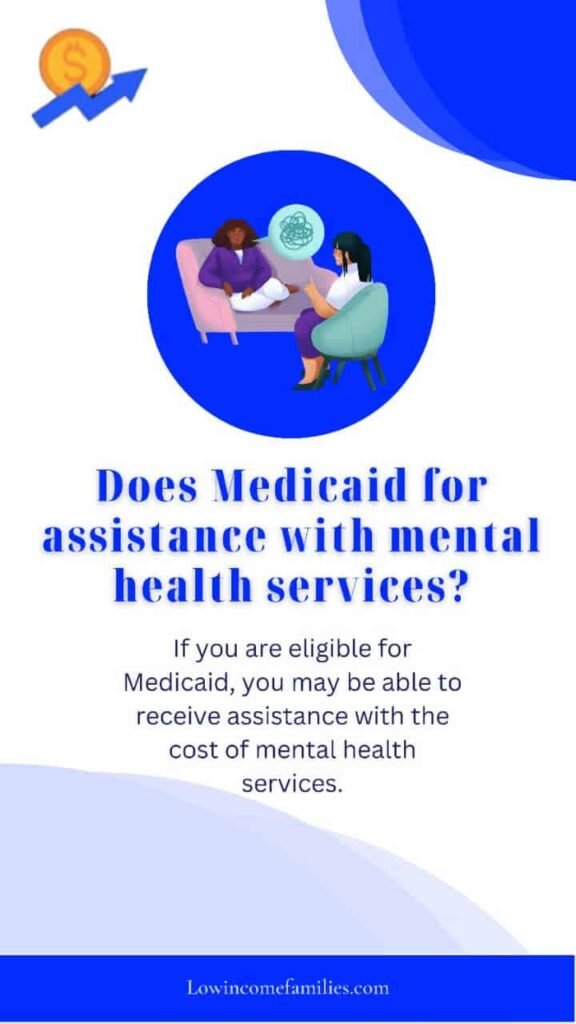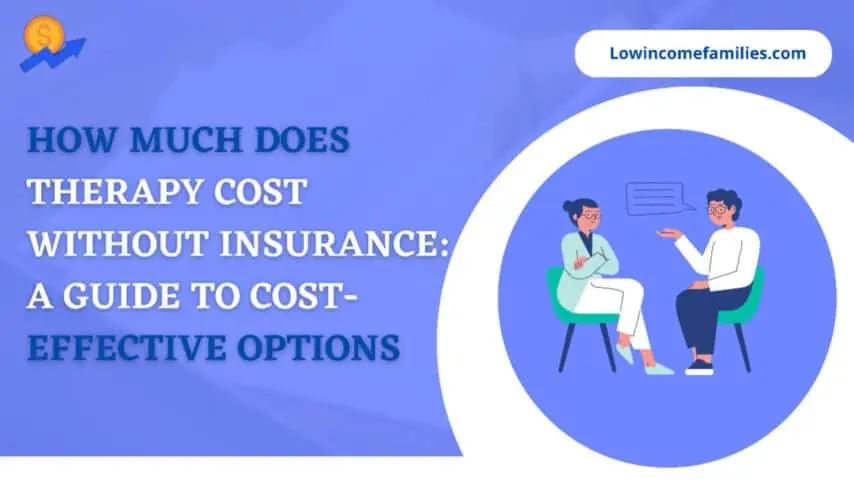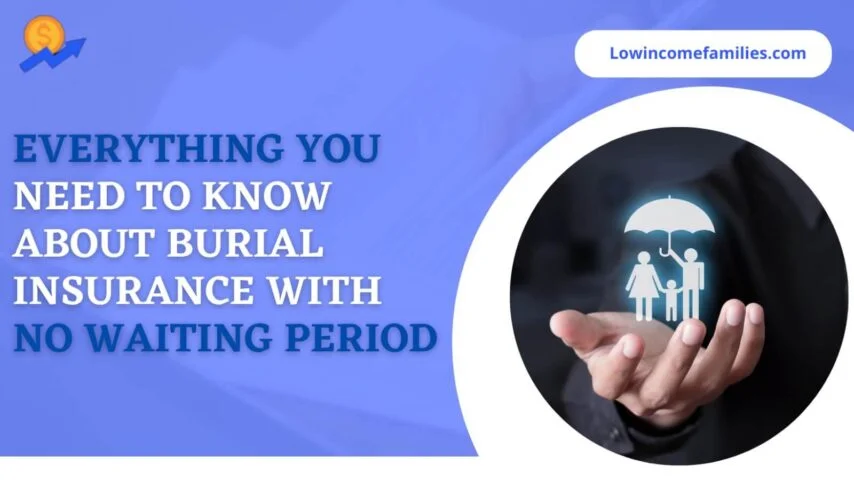With rising healthcare costs and the increasing prevalence of mental health conditions, many individuals are seeking out therapy but don’t have the insurance coverage or financial resources to access it. This article will provide you with some cost-effective options on how to pay for therapy without insurance so that you can get the help you need while staying within your budget.
How To Pay For Therapy Without Insurance?
If you’re like most people, you probably think that therapy is expensive and that you need insurance to cover the cost. However, there are several ways to pay for therapy without insurance.
- One option is to pay for therapy out-of-pocket. This can be expensive, but there are several ways to make it more affordable. For example, you can look for sliding scale therapists or ask about payment plans. You can also check with your local community mental health center to see if they offer any low-cost or free options.
- Another option is to use your health savings account (HSA) or flexible spending account (FSA). If you have one of these accounts, you can use the money in them to pay for therapy. You’ll just need to make sure that your therapist accepts this type of payment.
- Finally, several crowdfunding platforms can help you raise money to pay for therapy. These platforms allow you to set up a campaign and then solicit donations from friends, family, and strangers.
No matter which option you choose, paying for therapy without insurance is possible. It may take some extra effort, but it’s worth it if it means getting the help you need.
Check Also: How much is the urgent care cost, if you don’t have insurance, Read More Here
How Much Does Therapy Cost Without Insurance?
If you’re paying for therapy out-of-pocket, the average cost is $75-$150 per session. Many therapists offer a sliding scale fee based on income. Some therapists offer a free initial consultation.
There are several ways to pay for therapy without insurance. You can also use a health savings account (HSA) or flexible spending account (FSA).
If your employer offers an Employee Assistance Program (EAP), you may be able to get free or low-cost counseling services.
If you’re having trouble affording therapy, there are a few options available to help you make it more affordable:
- Ask your therapist about a sliding scale fee.
- Use an HSA or FSA to pay for therapy sessions.
- See if your employer offers an EAP that covers counseling services.
- Look for low-cost or free community mental health resources in your area.
How Much Does Physical Therapy Cost?
Physical Therapy costs between $30 – $400 or more.
How Much Does Couples Therapy Cost?
Couples Therapy costs between $100-200 per hour or more.
How Much Does A Therapy Session Cost?
Therapy sessions generally range from $65 per hour to $250 or more.
How Much Is Mental Health Therapy Cost Without Insurance?
The cost of Mental Health Therapy is about $100 to $200 or more.
How Much Does Counseling Cost Without Insurance?
A Counseling session without insurance costs between $65 to over $250 per hour.
Cost-Effective Options For Paying For Therapy Without Insurance
There are several ways to pay for therapy without insurance. Here are some cost-effective options to consider :-
-
Use Your Health Savings Account (HSA) Or Flexible Spending Account (FSA)
If you have an Health Saving Account (HSA) or Flexible Spending Account (FSA), you can use these funds to cover the costs of therapy. Check with your plan administrator to see if mental health services are covered under your plan.
-
Pay Out-Of-Pocket
Many therapists offer sliding scale fees based on income, so paying out-of-pocket may be more affordable than you think. You can also ask about payment plans or discounts for paying in cash.
-
Use A Credit Card With Rewards Points
If you have a credit card with rewards points, you may be able to redeem those points for cash back or statement credits that can be used to cover the costs of therapy. Check with your credit card issuer to see what options are available.
-
Ask About Reduced Fees
Some therapists offer reduced fees for those unable to pay the full fee. This is often based on a sliding scale, so be sure to ask about this option when you call to inquire about therapy services.
-
Sliding Scale And Low-Fee Clinics
Sliding scale and low-fee clinics are excellent options for those without insurance or who want to keep their therapy costs low. These clinics offer sliding scale fees based on income, so you only pay what you can afford.
Low-fee clinics typically charge $30-$50 per session, which is much lower than the average cost of therapy. If you’re looking for a sliding scale or low-fee clinic in your area, there are a few ways to find one.
You can search online directories such as OpenCounseling or you can call your local mental health center. Many community mental health centers offer sliding scale fees, so they’re a great resource for finding low-cost therapy options.
If you’re concerned about the quality of care you’ll receive at a sliding scale or low-fee clinic, rest assured that these clinics often hire experienced and licensed therapists. So, you’ll be getting high-quality care at a fraction of the cost.
-
Teletherapy/Video Chat Sessions
Teletherapy, also known as online therapy or video therapy, is a type of counseling that is provided via the internet. It is a convenient and flexible option for people who are unable to attend traditional in-person therapy sessions.
There are several teletherapy platforms that counselors and therapists can use to provide services to clients. Some of the most popular platforms include Skype, FaceTime, Zoom, and Google Hangouts.
Teletherapy sessions are typically conducted via video chat, although some counselors also offer audio-only options. Sessions usually last for 45-60 minutes, and rates vary depending on the counselor or therapist.
While many insurance companies do not cover teletherapy services, there are several ways to pay for teletherapy without insurance. Some counselors and therapists offer sliding scale fees based on income, while others accept payment through PayPal or Venmo.
If you’re interested in exploring teletherapy as an option for counseling or therapy, reach out to a few different providers to compare rates and see what payment options they offer.
-
Online Self-Help Resources
There are several online self-help resources available to help you pay for therapy without insurance. Here are a few of the most popular options :-
-
Online Therapy
is a great option for those who need flexibility and convenience. There are several reputable online therapy providers, such as Talkspace and BetterHelp, that offer affordable plans.
-
Crowdfunding
If you’re struggling to pay for therapy out of pocket, crowdfunding can be a great option. Platforms like GoFundMe and YouCaring allow you to set up campaigns to raise funds from family, friends, and strangers.
-
Sliding Scale Therapy
is an option for those who need financial assistance with paying for therapy services. Many therapists offer sliding scale fees based on income and ability to pay.
-
Employee Assistance Programs (EAPs)
If your workplace offers an EAP, you may be able to get free or low-cost counseling services through them. Check with your HR department to see if this benefit is available to you.
-
Community Services & Support Groups
Community services and support groups are a great way to get therapy without insurance. Many community mental health centers offer sliding scale fees based on income, and some offer free or low-cost services. Many online support groups can be accessed for free.
Support groups provide a space for people to share their experiences and connect with others who understand what they are going through. These groups can be a great source of support and information, and they can often be found for free or at a low cost.
Some community mental health centers offer therapy groups as well as individual therapy. These groups can be a great way to get support and meet other people who are dealing with similar issues.
If you are looking for more affordable options for therapy, consider contacting your local community mental health center or searching for online support groups. These resources can provide you with the support you need at a price that you can afford.
-
Nonprofit Organizations & Charities
Several nonprofit organizations and charities provide low-cost or free therapy services. Here are a few examples :-
- The National Alliance on Mental Illness (NAMI) provides free support groups and educational resources for people living with mental illness.
- The Depression and Bipolar Support Alliance (DBSA) offers free peer-support groups for people living with mood disorders.
- Samaritans is a 24-hour crisis hotline that offers emotional support to anyone in need.
These are just a few examples of the many resources available to those who need help paying for therapy. Do some research to see what organizations and charities are available in your area.
-
Government Programs
There are many government programs available to help offset the cost of therapy. The most well-known is Medicare, which provides coverage for seniors and people with disabilities.
Medicaid is another government program that provides coverage for low-income individuals and families. There are also state-specific programs that can assist with the cost of therapy.
One way to find out if you qualify for any government assistance is to contact your local social services office. They will be able to tell you what programs are available in your area and how to apply for them. You can also search for government benefits on the website Benefits.gov.
Does Medicaid For Assistance With Mental Health Services?
For many people, therapy is an essential part of maintaining mental health. Unfortunately, the cost of therapy can be prohibitive for some, especially those who do not have health insurance.

Medicaid is a government-funded program that provides health insurance for low-income individuals and families. Medicaid covers a wide range of mental health services, including counseling, therapy, and psychiatric care.
If you are eligible for Medicaid, you may be able to receive assistance with the cost of mental health services.
Other Tips To Make Therapy More Affordable
- Look For A Sliding Scale Therapist : Many therapists offer a sliding scale, which means that they charge based on your ability to pay. This can be a great option if you don’t have insurance or if your insurance doesn’t cover therapy.
- Check With Your Local Community Mental Health Center : These centers typically offer low-cost or no-cost therapy options.
- Talk To Your Therapist About Payment Options : Some therapists are willing to negotiate payment plans or accept insurance.
- Consider Online Therapy : Several reputable online therapy providers offer affordable therapy options.
- Do Some Research : There are several resources available that can help you find affordable therapy options in your area.
Conclusion:-
We hope this article has offered some insight into how to pay for therapy without insurance. Whether you are looking for low-cost online options or ways to lower the costs associated with traditional in-person sessions, there are many cost-effective alternatives worth considering.
With a little research and effort, it is possible to find the right type of therapy that fits your budget and lifestyle needs.
Frequently Asked Questions
How much does therapy cost without insurance?
Therapy can be a very expensive endeavor, especially if you do not have insurance to help cover the costs. The average cost of therapy without insurance is $80-$120 per session, although this price can vary depending on the therapist’s experience and location.
Are there any cost-effective options for therapy without insurance?
Yes! There are a few different ways to make therapy more affordable, even if you don’t have insurance. Many therapists offer sliding scale fees based on income, which can make therapy much more affordable. Additionally, some therapists offer group therapy or discounts for pre-paying for multiple sessions. Finally, many communities have free or low-cost mental health clinics that offer counseling services.
What are some things I can do to make my therapy sessions more affordable?
There are a few things you can do to keep costs down when seeking therapy without insurance. First, see if your therapist offers a sliding scale fee based on income. Second, ask about group rates or discounts for pre-paying for multiple sessions upfront. Finally, check to see if any free or low-cost mental health clinics in your community offer counseling services.
How can I find a therapist if I don’t have insurance?
If you don’t have insurance, there are several ways to find a therapist. You can ask friends or family members for referrals, search online directories such as Psychology Today or Goodtherapy.org, or even contact your local mental health association. Additionally, many communities have free or low-cost mental health clinics that offer counseling services.
What types of therapy are available without insurance?
There are many different types of therapy available, even without insurance. Some common types of treatment include cognitive-behavioral therapy (CBT), psychodynamic therapy, interpersonal therapy, and family/couples therapy. Depending on your specific needs, your therapist may suggest a different type of therapy that is more suitable for you.












